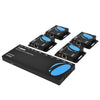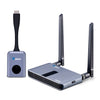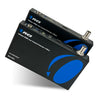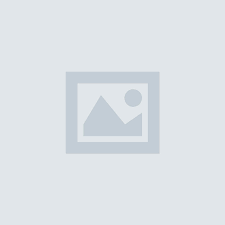How to get Dolby Atmos from a Non-eARC TV?

Have you ever felt that your TV is holding you back from the full excitement and experience of your favorite movies and shows? Let’s say you have an eARC soundbar. It can easily support audio formats such as Dolby Atmos and DTS:X, making it a perfect addition to your home theater. However, what if you own a non-eARC TV. Here’s a solution: an HDMI Audio Extractor!
Before we dive into how an audio extractor works and how it solves this issue for you, let’s first understand what an eARC TV and an eARC Soundbar is.
Understanding the eARC TV and eARC Soundbar Connection
Let's break down how eARC works with your TV and soundbar.
eARC stands for Enhanced Audio Return Channel, and it's like a superhighway for the best quality audio between modern TVs and soundbars. This audio superhighway makes sure that advanced audio formats like Dolby Atmos flow smoothly, creating an immersive experience. Imagine it as a direct link that ensures you hear everything as it's meant to be heard.
In an ideal scenario, you would have connected your media devices such as Fire TV Stick, Roku Stick, DVD Player, etc. to your eARC TV’s HDMI Inputs. Then connect the eARC port of your TV to the eARC port of your Soundbar using an HDMI 2.1 cable. Now, no matter which source you are playing your content from, the audio will go from the TV directly to the Soundbar and offer you the highest, most enhanced audio experience that your TV speakers just can’t deliver.
Now that we’ve cleared that up, let’s go back to the main problem: what if you own an eARC or ARC soundbar, but you have a non-eARC TV?
If you own a relatively new TV, it may come equipped with an ARC (Audio Return Channel) port, which is a step up from standard audio outputs. While ARC can transmit audio from your TV to your soundbar or AV receiver, it falls short when it comes to handling advanced audio formats.
But how about if you have an even older TV that supports neither eARC nor ARC? In this situation, you're left with only basic audio output options like your TV speakers or the Optical or Analog output from your TV, which can be quite limiting for your home theater dreams.
The Solution: Audio Extractor
Meet the hero of our story: the HDA-929. This versatile device is the key to unlocking the full potential of your audio setup, even if you have a non-eARC TV. Let's delve into what this extractor is and how it can transform your home entertainment experience.
The HDA-929 is a compact and handy device designed to extract audio signals from your TV's HDMI ARC port or directly from the media source. It serves as a bridge between your non-eARC TV and your eARC-compatible soundbar or AV receiver. The Extractor is equipped with multiple HDMI inputs and outputs. It works by extracting the audio signal from your media source and sending it separately to your eARC-compatible soundbar or AV receiver, ensuring that you get the full Dolby Atmos experience.
Here's a practical example of how it works: You connect your TV's HDMI ARC port or a normal HDMI Input to the extractor's OUT 1 labeled TV, and then the Extractor's HDMI output labeled Soundbar is connected to the eARC-compatible soundbar. This allows your eARC soundbar to receive high-quality audio while ensuring compatibility with your non-eARC TV. So, whether you have a TV with ARC, eARC or neither, this device provides a solution that works seamlessly.

Are you excited to use it for your setup yet? Let’s dive deeper into how an audio extractor, specifically the HDA-929, can revolutionize your home entertainment experience.
Benefits of Using The HDA-929
Dolby Atmos on Any TV: The primary benefit of an extractor is its ability to make Dolby Atmos accessible even on non-eARC TVs. You no longer need to invest in a new television just to enjoy this immersive audio technology. The HDA-929 bridges this gap, allowing you to experience audio that moves in every dimension around you, enhancing your overall viewing experience.
Seamless Installation: Installing the HDA-929 is a hassle-free process that doesn't require advanced technical skills. It's essentially plug-and-play. Connect your TV, soundbar, media devices, and the Extractor, and you're all set. This user-friendly design makes it accessible for individuals who might not be tech-savvy.
Compatibility: Audio Extractors, such as the HDA-929, are highly compatible with various soundbar and AV receiver models. Whether you have a Samsung, LG, Sony, or any other brand of television or sound equipment, you will find that the HDA-929 works with almost all of them.
Enhanced Audio Formats: In addition to Dolby Atmos, the HDA-929 supports other advanced audio formats, making it a versatile solution for cinephiles and audiophiles who demand the best audio quality.
Minimal Signal Loss: The extractor ensures minimal signal loss, preserving the high-quality audio you expect from your soundbar. This is crucial for maintaining the integrity of immersive audio formats.
Affordability: Compared to investing in a new eARC-compatible TV, the HDA-929 is a cost-effective solution. It brings you all the benefits of advanced audio formats without breaking the bank.
How to Set Up an the HDA-929 for Dolby Atmos
Setting up an Audio Extractor is a straightforward process that doesn't require specialized skills. Here's a step-by-step guide to getting your non-eARC TV ready for Dolby Atmos:
Step 1: Gather your non-eARC TV, eARC-compatible soundbar, your cables, and the HDA-929. You may also take this opportunity to find a way for you to cleanly route your cables from your TV to your extractor, and from your extractor to your soundbar.
Step 2: Connect the TV to the extractor. You can do this by plugging in one end of the HDMI cable into your TV’s ARC, eARC or a normal HDMI port and the other end into the HDMI port labeled “ARC/eARC TV OUT 1”.
Step 3: Connect the extractor to your soundbar. Do this by using an HDMI cable to connect your eARC-compatible soundbar to the “ARC/eARC Soundbar” output port on the HDA-929.
Step 4: Connect your media device. You can do this by connecting your media device such as the Fire Tv stick or Roku stick to the port labeled “HDMI IN” on the HDA-929.
Step 5: Power up all your devices and load some media content that supports Dolby Atmos for testing.
Step 6: Enjoy!

If your setup is not working properly after following these steps, you may want to check your TV, soundbar, or extractor for damages. You may also want to consider replacing the cables you’ve used. HDMI 2.1 cables are recommended for eARC connections. If you still face issues you may want to check the product’s user manual or reach out to the support team for technical advice.
Once everything has been set up properly., you can start enjoying Dolby Atmos on your non-eARC TV. Play your favorite movies, shows, or games and experience audio like never before.
To conclude, whether you're a tech enthusiast or someone who simply wants to enjoy exceptional home entertainment, the HDA-929 can be your ticket to a world of immersive audio. Don't let your non-eARC TV limit your audio experience. Experience the magic of Dolby Atmos with this seemingly small, yet powerful device.
With compatibility for cutting-edge audio technologies, it transforms your non-eARC TV into an audio powerhouse. Additionally, it supports 4K visuals, ensuring that your entertainment is as breathtaking as it is captivating. Seamless setup and dedicated audio output enhance your listening experience. The OREI HDA-929 takes your home theater setup to new heights, making it an essential addition for every entertainment enthusiast.
Learn more about the OREI HDA-929 4K HDMI ARC/eARC Audio Extractor by visiting our shop! In there, you’ll find a complete list of this product’s features and reviews, as well as its technical specifications which include its supported audio formats, video formats, devices, and more.
Are you looking for other ways to improve your home entertainment setup? Find more articles like this in our blog!





























Comments
Sherwin said:
My old TV doesn’t support ARC/ EARC source. And I have a soundbar that has EARC source. Is this devise still going to connect?